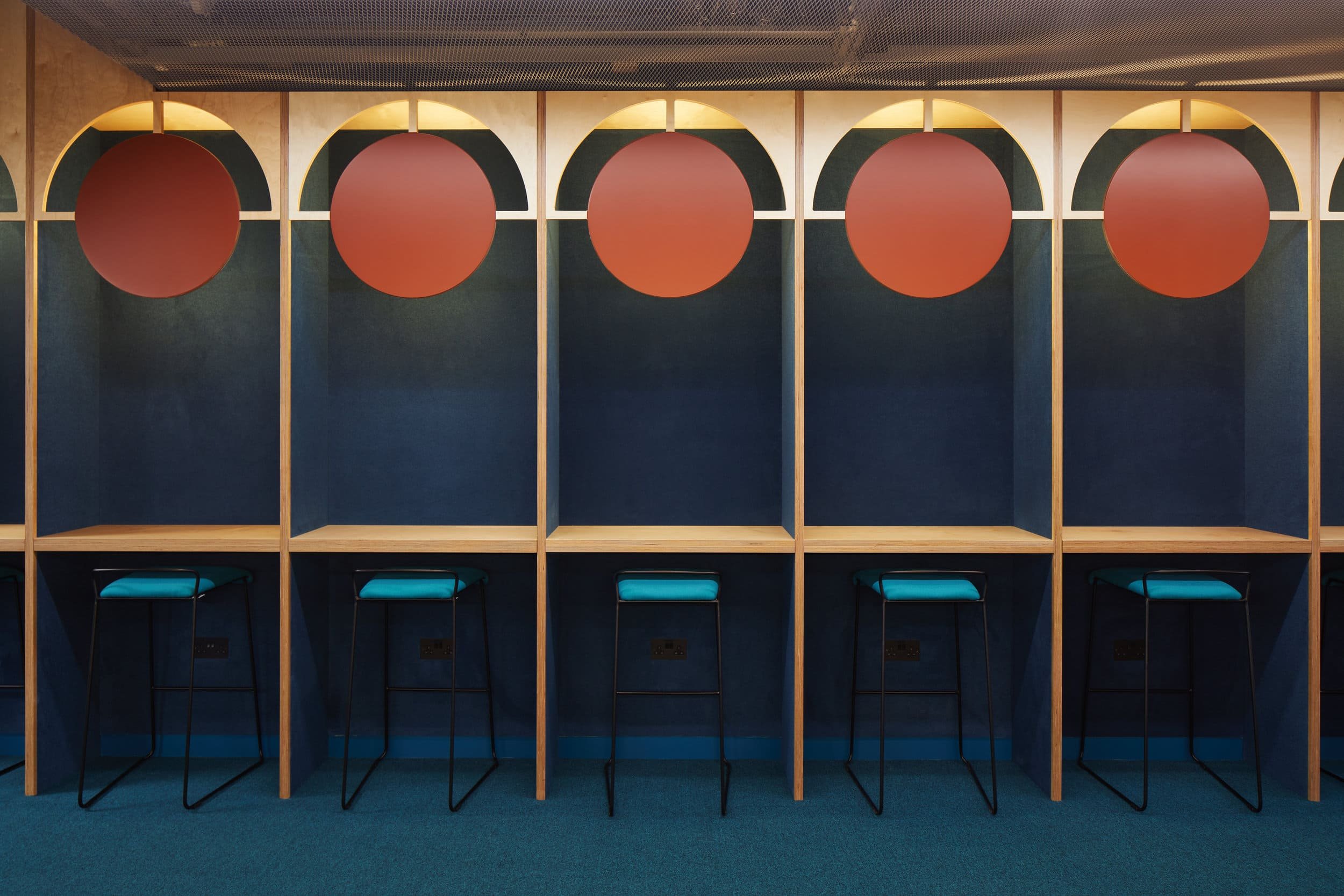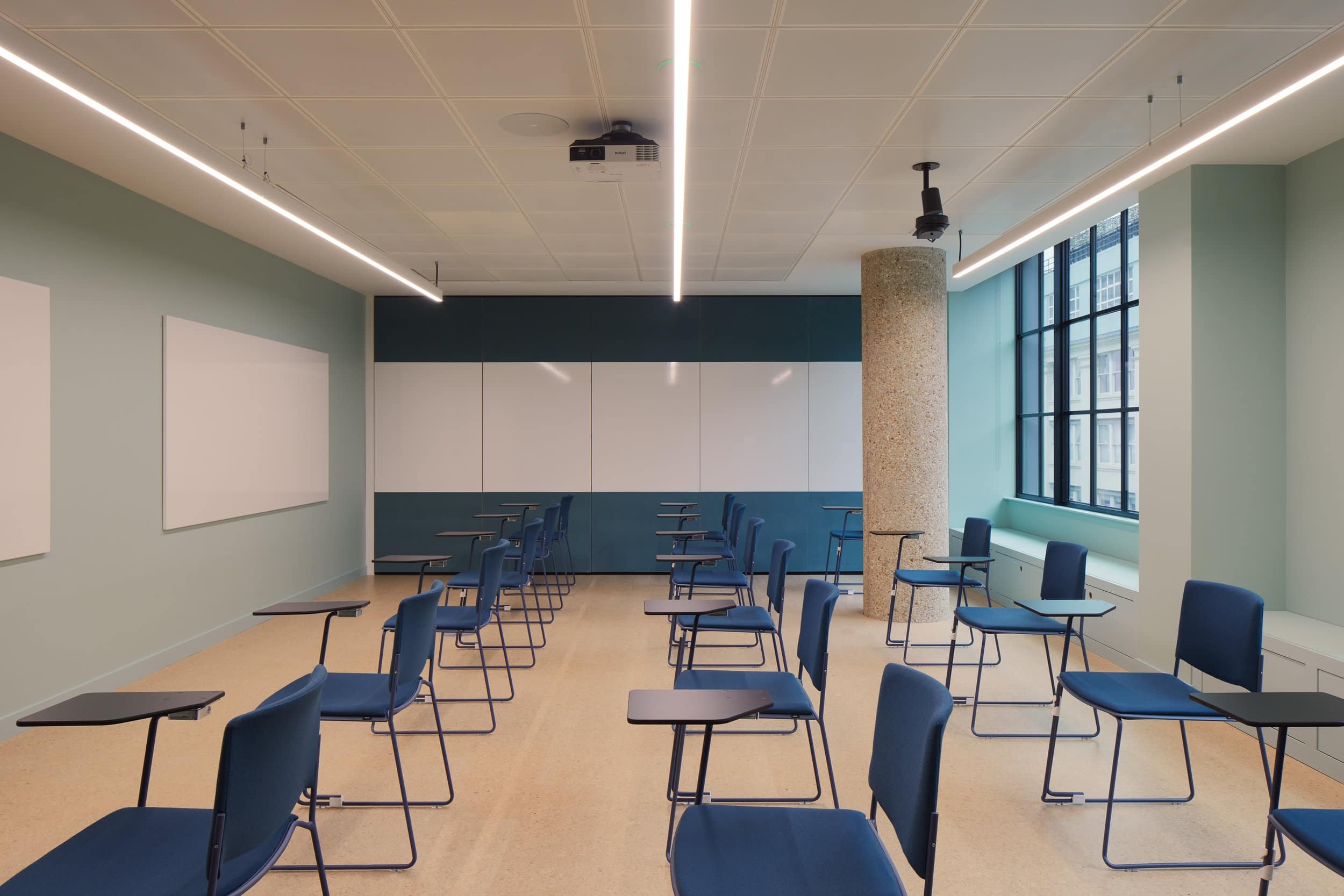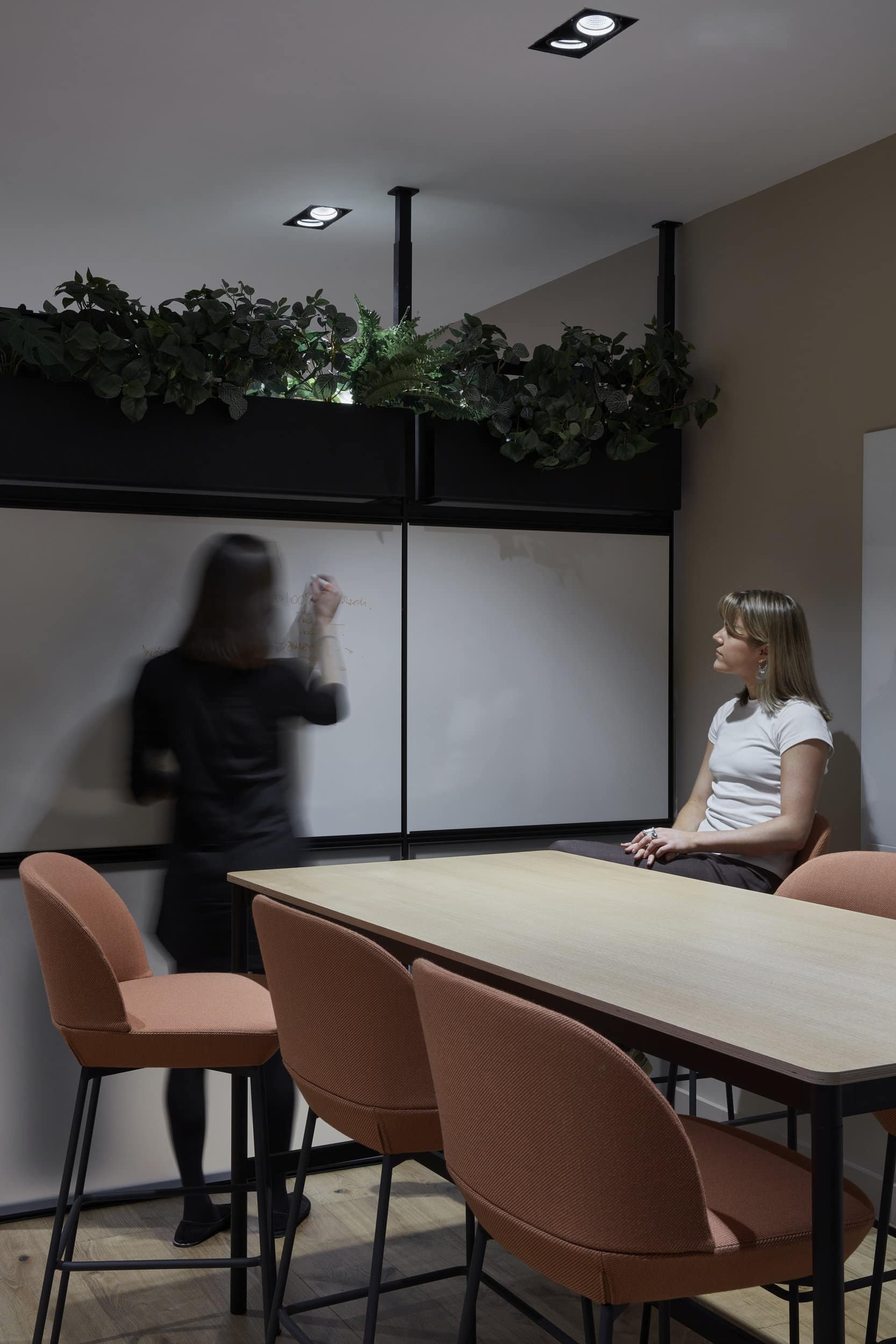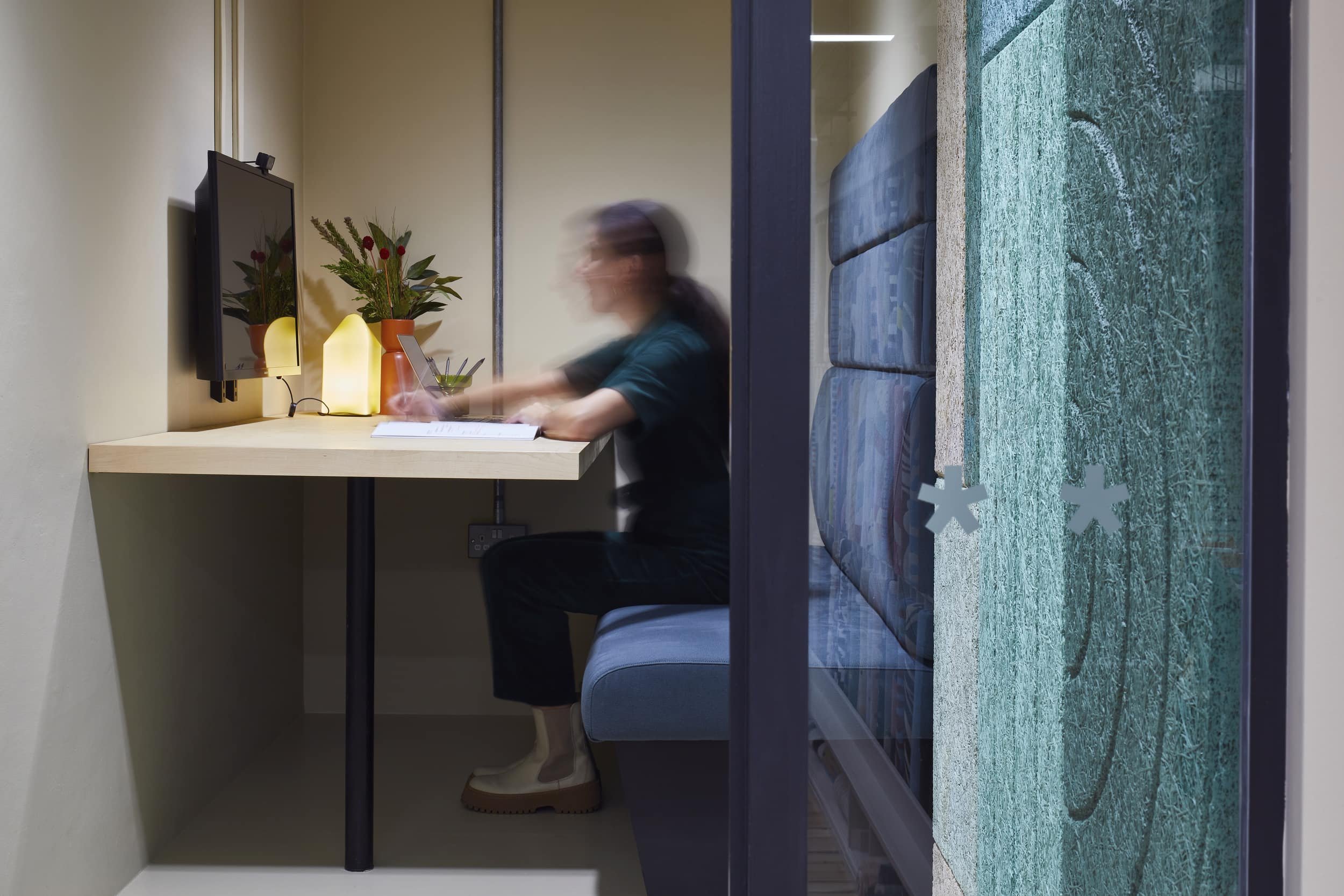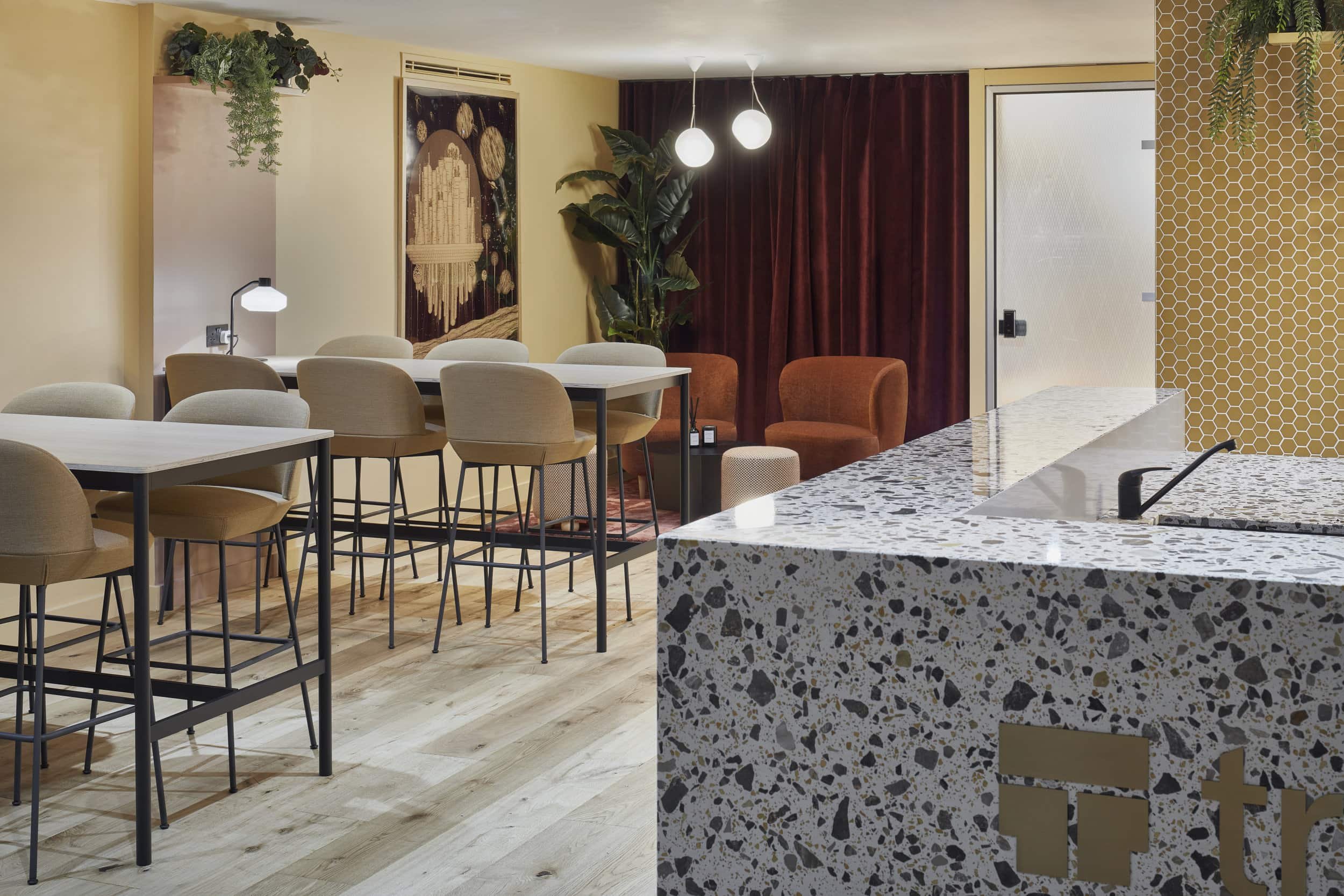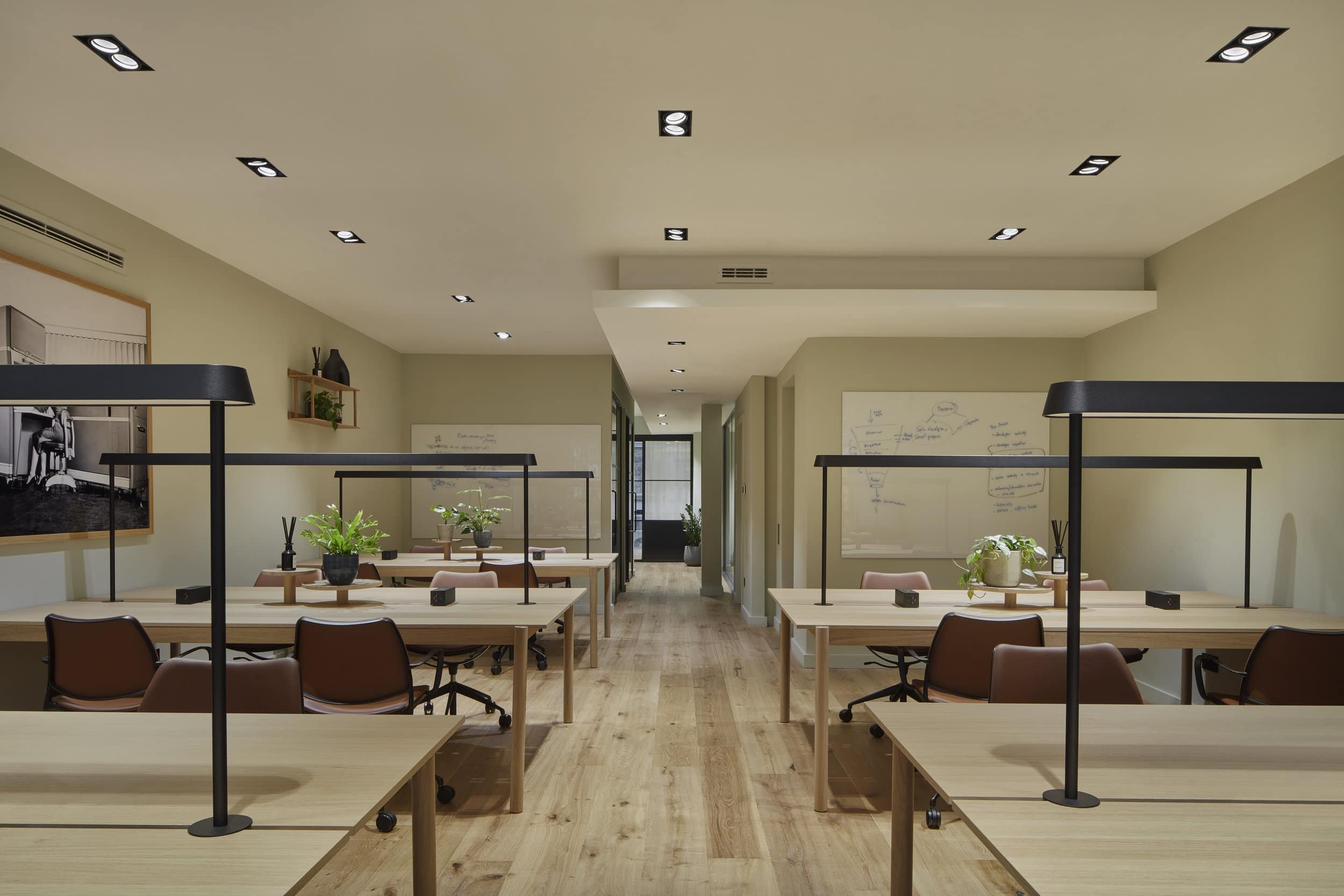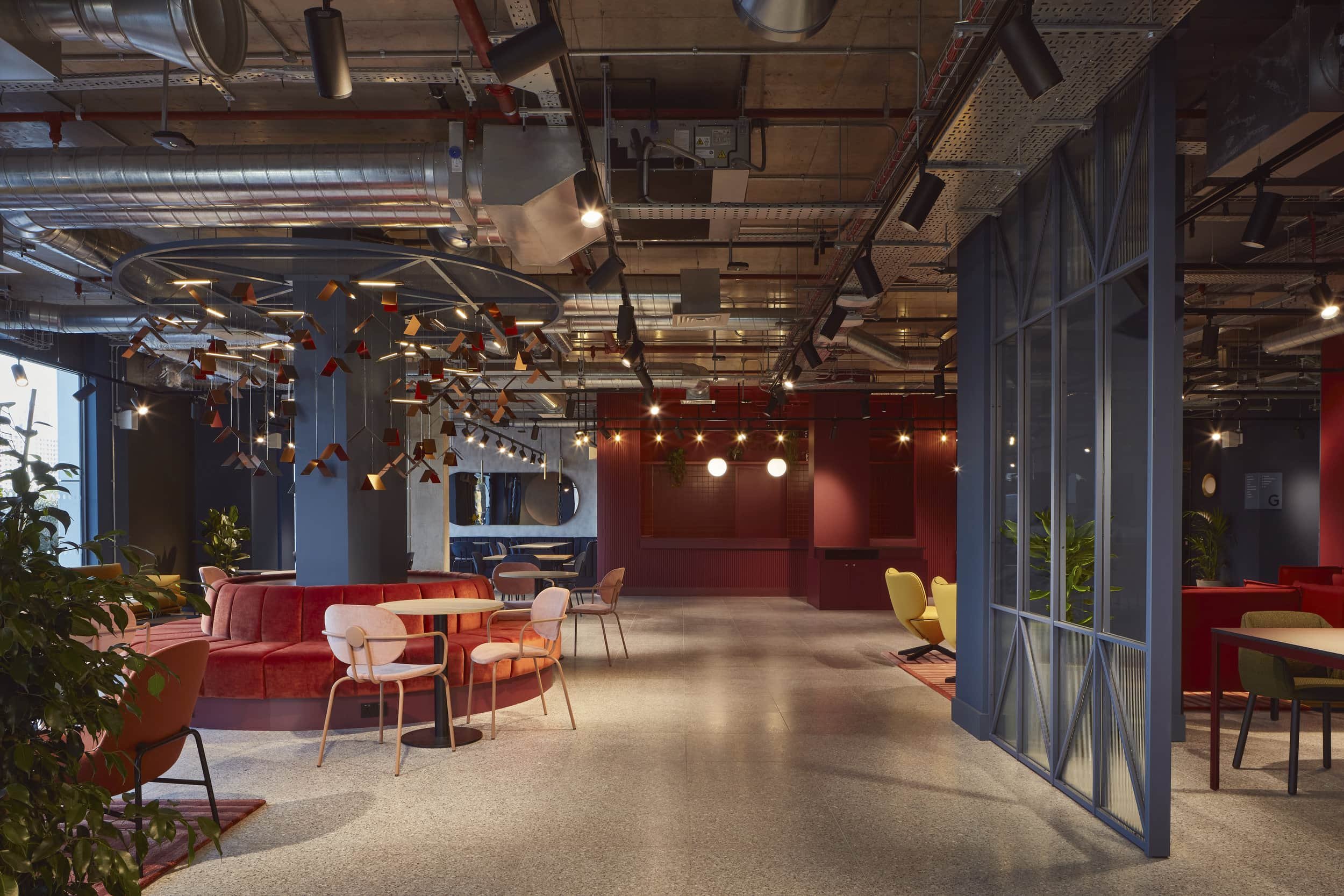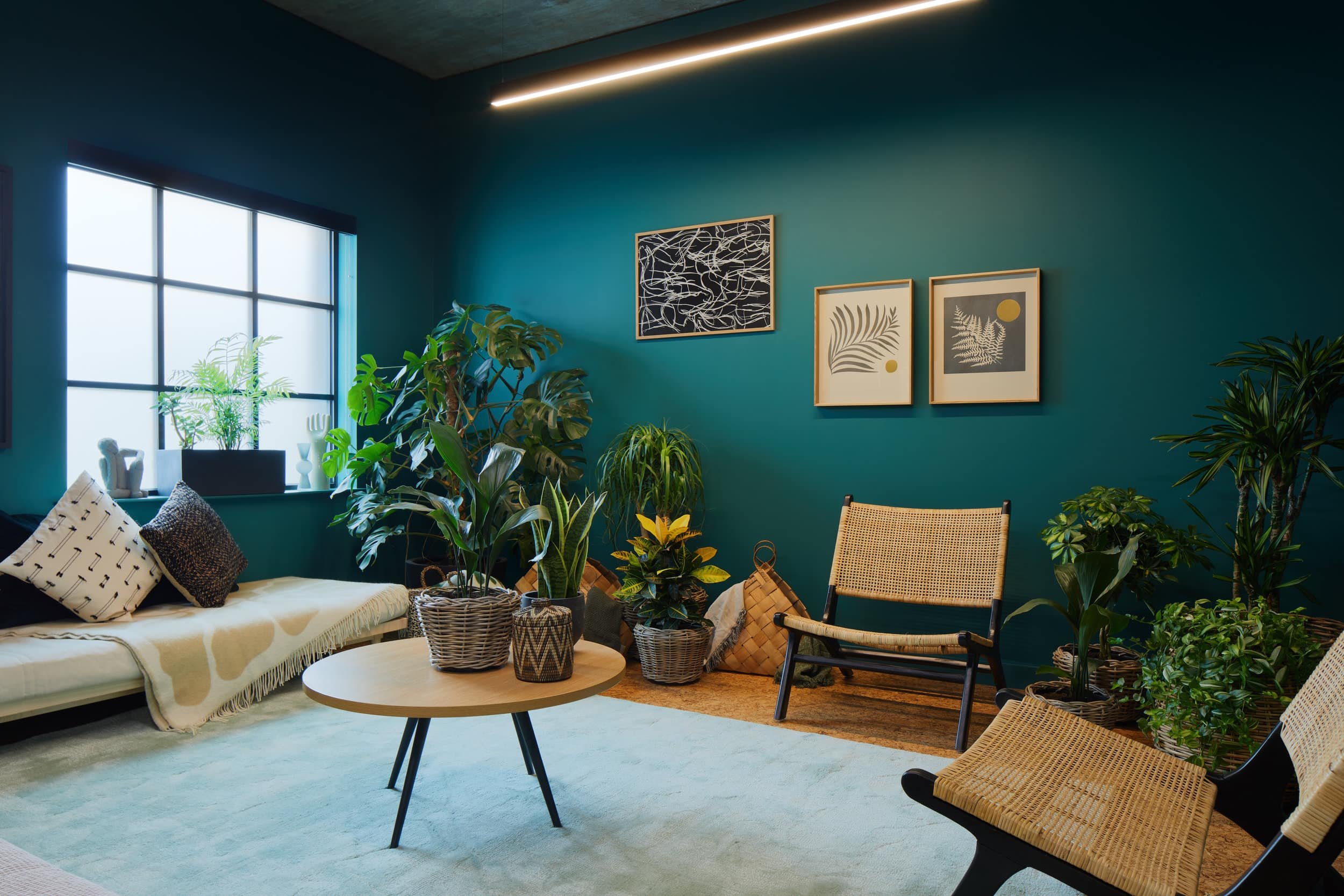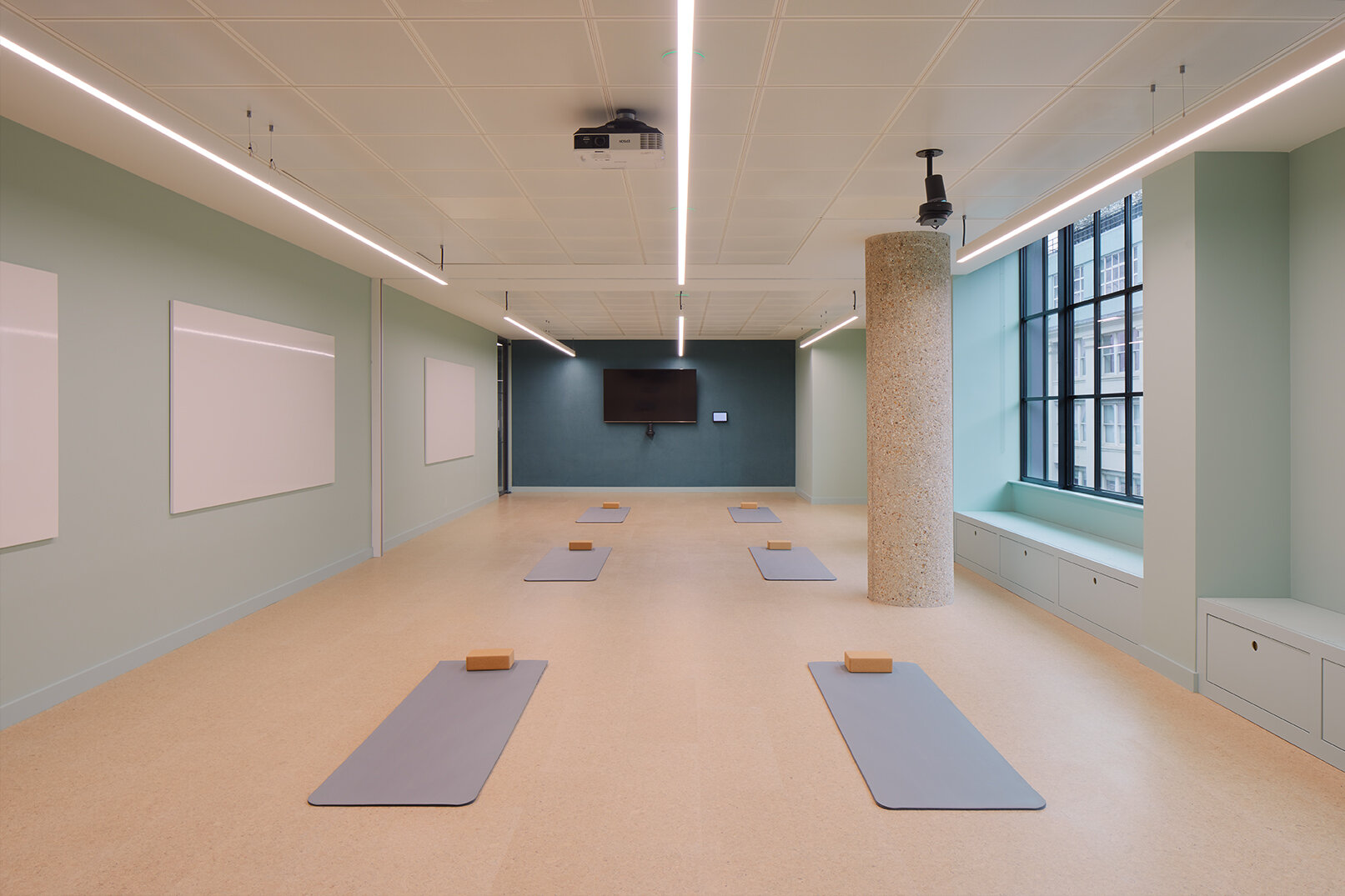How to design an agile workspace
An Agile Workplace is flexible both in terms of the physical workspace as well as in practice; an agile working strategy better accommodates employees by replacing traditional office rules with general guidelines, within the setting of a dynamic workspace. There's a sense of freedom and autonomy inherent to agile workplaces, although they are generally well supported by infrastructure and a well considered and thoughtfully designed office environment that enables employees to be productive, motivated and engaged.
MVF Global is an agile workspace where employees hot desk and a number of different workplace settings are provided
The Agile Working Day
An Agile Work Environment is designed and fitted out to accommodate the changing requirements employees may have throughout the day. A single area might serve multiple different purposes at multiple times for multiple groups of people. Employees having the flexibility and freedom to choose where they work to suit the requirements of them for a particular task or working activity, is what makes it agile.
In the early to mid 2000’s this was often a hard sell for us office interior designers! Now, in the post pandemic workspace it is more recognised as a necessary and indeed essential to your workspace strategy and supports Hybrid Working well.
Unassigned Desks
If employees are not in the office every day then it makes sense that they do not have an assigned desk. There was a huge revolt around the term ’hot desking’ back in the day as this tended to mean a bun fight every morning over the ‘best desk next to the window’ when employees were required to be present everyday hot desking and switching belongings around all the time felt like a chore and an option that lacked personalisation; plus the drive to hot desking was often about saving money on real estate! Now this is not the case and unassigned desks are the norm in the majority of companies that have adopted hybrid working strategies.
Hot-Desking
Us humans adapted quickly through the pandemic to working remotely; from our homes we had the ability (and sometimes need) to move from room to room or bed to chair (often hiding from kids and cats to focus!); many companies did not reopen offices swiftly and even when people could leave their homes they realised there was a benefit to working in other spaces close to home instead of commuting, thus the remote working generation was really born! These factors have combined to make shared desking much more palatable to people. Workspaces in general are becoming overall more home-like and personal which is removing the need to have photos of our cats and kids on our desk; plus if we are working from home we have more time with our families and there is less of a need to have their photos adorn our workspace!
Why adopt an agile work style?
Research has shown giving people choice over where to work throughout the day, enabling them to find the best space to suit their needs empowers them, improves wellbeing and increases happiness at work; happy people are more productive people so it is a win-win for both the individual and the organisation so if you are considering an office redesign or office refurbishment start first by considering how your teams are working and what physical spaces they require to work efficiently.
How to create the best agile workspace?
At Trifle* our Office Interior Design team talk about creating a landscape of spaces; this generally includes spaces for:
Focus and thinking
Research and Learning
Open Collaboration
Private collaboration
Private meetings
Socialising
General Desk based work
Creativity and inspiration
Comfort and Relaxation
Wellbeing and Recharging
Each office space we design is tailored to the specific needs of that business and the teams who use them and the requirements are established early on in the briefing process. There is no ‘one size fits all’ so it is important that before any space planning or interior design begins that discussions and workshops are held to capture the essence of your business and people and all their varied needs.
Do private offices have a place in the agile workspace?
CEO’s and Leadership Team members will tend not to have private offices in agile workspaces as these are more suited to traditional office layouts and go against the fundamentals of the agile working principle. Instead Business Leaders too will move freely throughout the space during the day collaborating with teams or individuals. We always incorporate areas that are private and confidential so there is always a space to go to for that purpose although now with Hybrid working models we find that the majority of confidential conversations will happen by phone or Video conference on days people are working from home.
Agile furniture solutions
Fortunately there are brilliant agile furniture solutions on the market now. Furniture options such as acoustically proofed high back chairs, flexible room dividers, plug in phone booths and plug in meeting pods. Meeting tables with flip tops on wheels, stackable chairs and even ergonomic stools. Sofa systems and other soft furnishings that incorporate power and USB sockets; for the office spaces we design today we are asked to build in flexibility and agile solutions so these furniture products are a great help and there are more being developed as I write.
Agile office designers
We have been designing some of London’s best agile offices for the last decade; If you would find it useful to view some agile workspace examples and inspiration you can take a look at examples of agile workspaces below we have designed and we have also put together a pinterest board of agile office inspiration for you.
Author: Emma Morley, Founder and Director
Emma founded Trifle* in 2010 after a career in marketing, event design and production. Frustrated by the fact that only advertising agencies had inspiring spaces she had a desire to make good design the norm for all office workers. Emma has worked across well over 150 interior projects during her career at the helm of Trifle*, she remains passionate about making amazing spaces but also making the industry more accessible, more human and more diverse.



